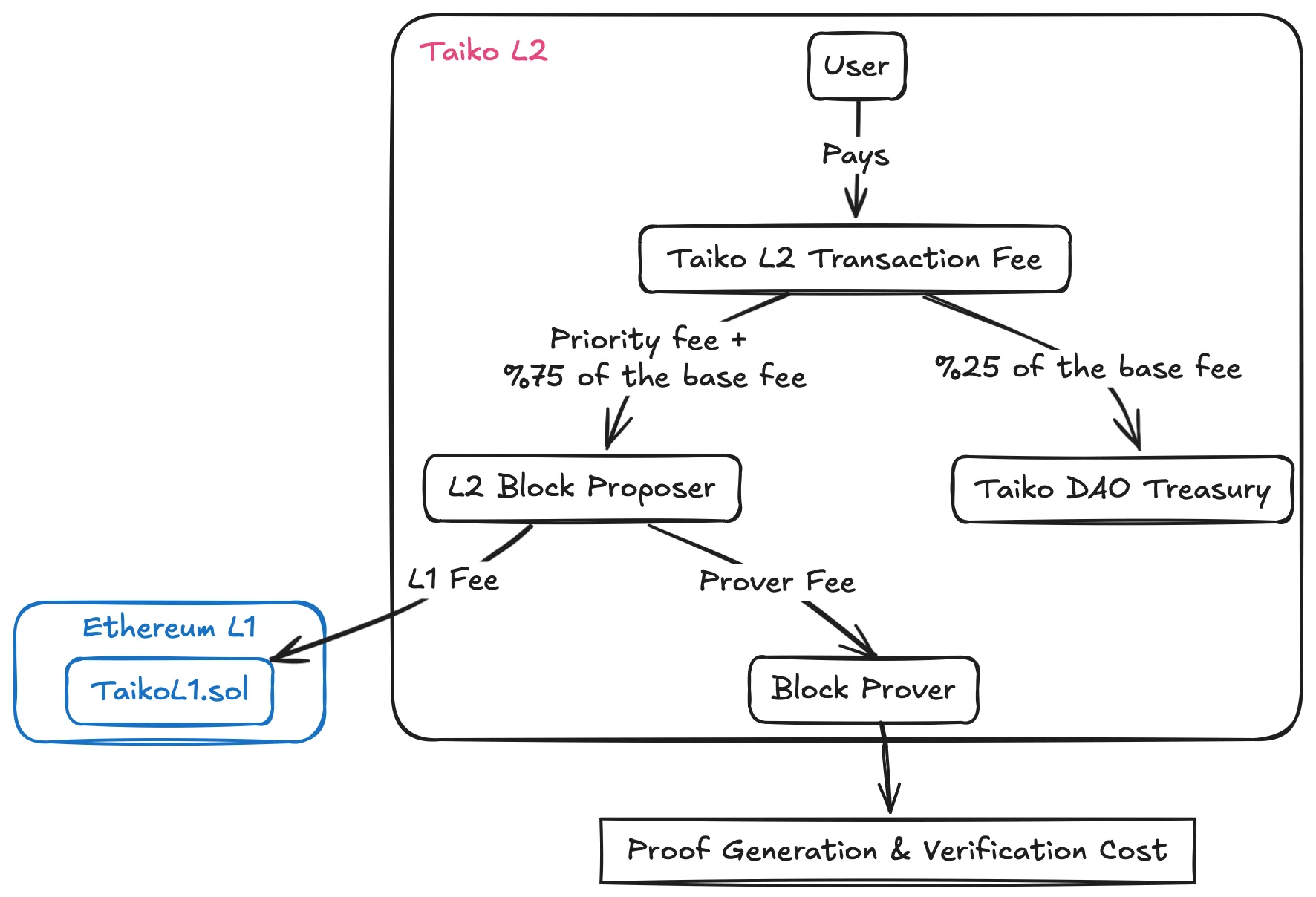Economics
Taiko Alethia’s based rollup design and multi-proof architecture create a unique economic cycle. The protocol ensures fair compensation for both block proposers and block provers, while sustaining the network through the Taiko DAO Treasury.
The following diagram illustrates Taiko Alethia’s transaction fee flow:

Transaction Fees and Their Allocation
When a user submits a transaction on Taiko L2, they pay a transaction fee that consists of:
- Priority Fee → Sent directly to the L2 block proposer.
- Base Fee → Split between the L2 block proposer and the Taiko DAO Treasury.
Fee Breakdown
| Component | Recipient | Purpose |
|---|---|---|
| Priority Fee | L2 Block Proposer | Incentivizes faster inclusion of transactions. |
| 75% of Base Fee | L2 Block Proposer | Compensation for proposing the block. |
| 25% of Base Fee | Taiko DAO Treasury | Funds ecosystem development and network sustainability. |
Block Proposer Responsibilities & Costs
The L2 block proposer is responsible for:
- Aggregating and ordering transactions into L2 blocks.
- Submitting L2 blocks to Ethereum L1 by calling
proposeBlockinTaikoL1.sol.
Costs Incurred by L2 Block Proposer
- L1 Fee → Paid to Ethereum L1 via
TaikoL1.solwhen proposing an L2 block. - Prover Fee → Paid to the block prover for proving the correctness of the block.
Block Prover Responsibilities & Costs
The block prover is responsible for:
- Generating cryptographic proofs to verify the correctness of proposed L2 blocks.
- Submitting proofs to Ethereum L1 for verification.
Costs Incurred by Block Prover
- Computation Costs → Proof generation requires significant computational resources.
- Gas Costs → Publishing proofs to Ethereum L1 incurs gas fees.
Network Sustainability & Taiko DAO Treasury
- The Taiko DAO Treasury receives 25% of the base fee, ensuring long-term sustainability of the protocol.
- The DAO uses these funds to support development, research, security, and governance.
- The validity/contest bond required for Taiko Alethia can be found on the Network Configuration page.